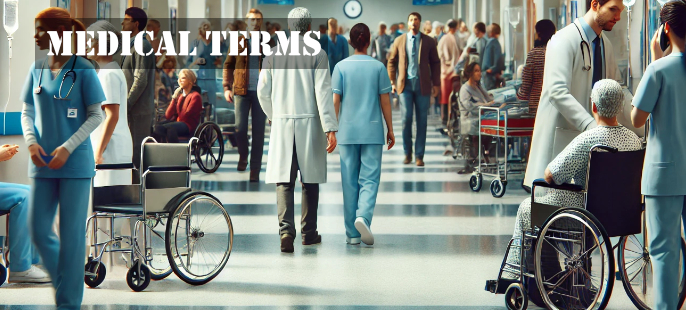Understanding Aneurysms: A Comprehensive Guide
An aneurysm is a localized, blood-filled balloon-like bulge in the wall of a blood vessel. This condition can occur in any blood vessel, but it most commonly develops in the arteries. Aneurysms are a critical medical concern because they can lead to severe complications, including rupture, which can cause life-threatening internal bleeding. This article aims to provide a detailed exploration of aneurysms, including their types, causes, symptoms, diagnosis, and treatment options.
Types of Aneurysms
Aneurysms are generally classified based on their location and shape. The most common types include:
Cerebral Aneurysm: Also known as a brain aneurysm, this type occurs in the blood vessels of the brain. If a cerebral aneurysm ruptures, it can lead to a hemorrhagic stroke, which is a medical emergency.
Aortic Aneurysm: This type involves the aorta, the largest artery in the body. Aortic aneurysms are further divided into thoracic aortic aneurysms, occurring in the chest, and abdominal aortic aneurysms, occurring in the abdomen.
Peripheral Aneurysm: These aneurysms occur in arteries other than the aorta and cerebral vessels, such as those in the legs, neck, or arms.
Aneurysms can also be categorized by their shape:
Saccular Aneurysm: This type appears as a rounded sac containing blood that is attached to an artery. It’s often described as a “berry” aneurysm when it occurs in the brain.
Fusiform Aneurysm: This type involves a circumferential dilation of the vessel wall, creating a spindle-shaped bulge.
Causes and Risk Factors
The exact cause of aneurysms is not always clear, but several factors can increase the risk of developing them:
Genetic Factors: Some individuals may have a genetic predisposition to aneurysms, which can be inherited from family members.
Hypertension: High blood pressure is a major risk factor as it exerts extra force against the arterial walls, potentially leading to aneurysm formation.
Atherosclerosis: The buildup of fatty deposits in the arteries can weaken the vessel walls, increasing the likelihood of an aneurysm.
Lifestyle Factors: Smoking, excessive alcohol consumption, and drug abuse (particularly stimulants like cocaine) can contribute to the development of aneurysms.
Trauma: Injury to blood vessels from accidents or surgeries can sometimes lead to aneurysms.
Symptoms of Aneurysms
Aneurysms can be asymptomatic, which means they often go unnoticed until they rupture or grow large enough to press on nearby structures. However, some symptoms can indicate the presence of an aneurysm:
Cerebral Aneurysm Symptoms: These may include sudden and severe headache, vision problems, neck pain, nausea, vomiting, and loss of consciousness.
Aortic Aneurysm Symptoms: Abdominal aortic aneurysms may cause a pulsating feeling near the navel, deep pain in the back or side, or a persistent pain in the abdomen. Thoracic aortic aneurysms might lead to chest pain, coughing, shortness of breath, and difficulty swallowing.
Peripheral Aneurysm Symptoms: These may cause pain, swelling, or a lump in the affected area, and may lead to complications such as blood clots.
Diagnosing Aneurysms
Diagnosing an aneurysm typically involves a combination of physical examinations and imaging tests. These tests can include:
Ultrasound: Often used for screening abdominal aortic aneurysms. It provides a clear picture of the size and shape of the aneurysm.
CT Scan: A computed tomography scan provides detailed cross-sectional images of the body and can help identify aneurysms in various locations.
MRI: Magnetic resonance imaging is useful for detecting cerebral aneurysms and assessing their size and shape.
Angiography: This involves injecting a contrast dye into the bloodstream and taking X-rays to visualize blood flow and detect aneurysms.
Treatment Options
Treatment for aneurysms depends on their size, location, and risk of rupture. Options include:
Observation: Small, asymptomatic aneurysms may only require regular monitoring through imaging, especially if the risk of rupture is low.
Medications: For some individuals, medications to control blood pressure and cholesterol may be prescribed to reduce the risk of aneurysm growth and rupture.
Surgical Intervention: Larger or symptomatic aneurysms may require surgery. Options include open surgical repair, where the aneurysm is removed and replaced with a synthetic graft, and endovascular repair, a minimally invasive procedure involving the insertion of a stent graft to reinforce the vessel wall.
Preventive Measures
While not all aneurysms can be prevented, several lifestyle modifications can help reduce the risk:
Maintain Healthy Blood Pressure: Regular monitoring and management of blood pressure through diet, exercise, and medication can reduce the risk of aneurysms.
Avoid Smoking: Smoking cessation is crucial, as tobacco use is a significant risk factor for aneurysm development and complications.
Healthy Diet and Exercise: A balanced diet low in saturated fats and regular physical activity can help prevent atherosclerosis and high blood pressure.
Regular Medical Check-ups: Routine health screenings can help detect cardiovascular issues early and manage risk factors effectively.
Aneurysms are a serious medical condition that require attention and care. Early detection and management are key to preventing complications such as rupture, which can be life-threatening. With advancements in medical imaging and surgical techniques, the prognosis for individuals with aneurysms has improved significantly. Nevertheless, understanding the risk factors and adopting a healthy lifestyle can play a pivotal role in minimizing the chances of developing an aneurysm. If you suspect you may have an aneurysm or are at risk, consult a healthcare professional for appropriate screening and preventive measures.

